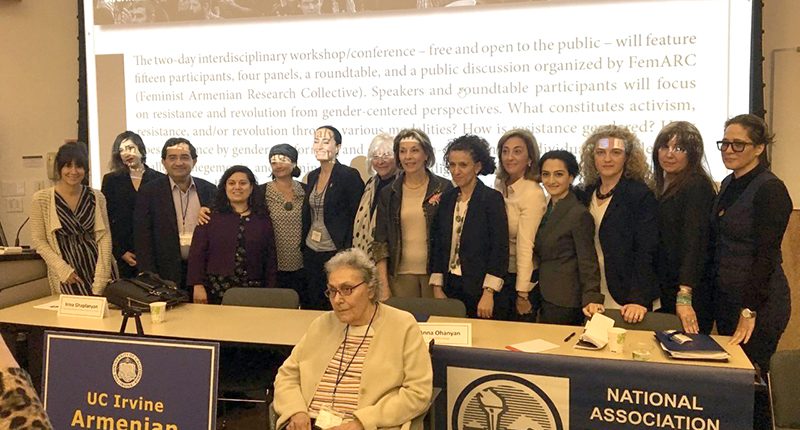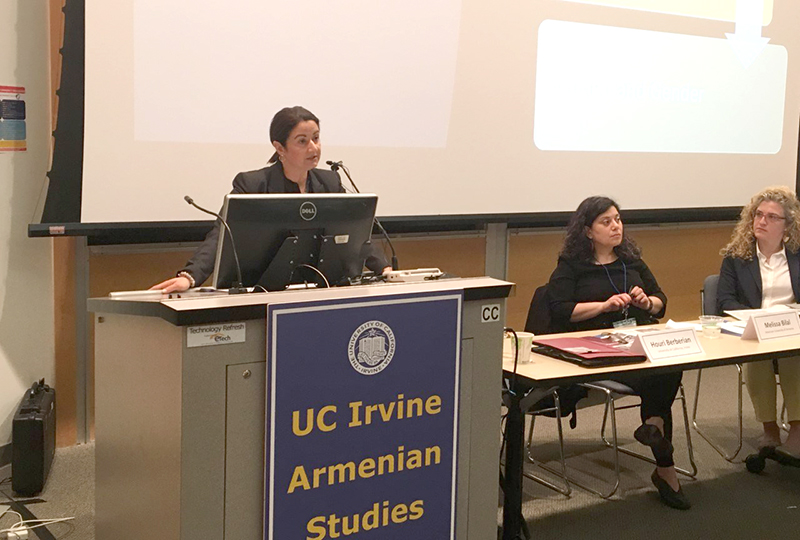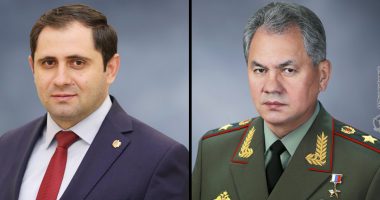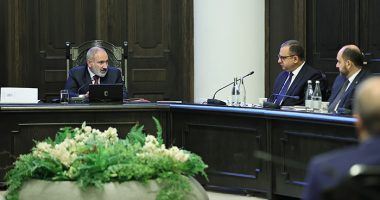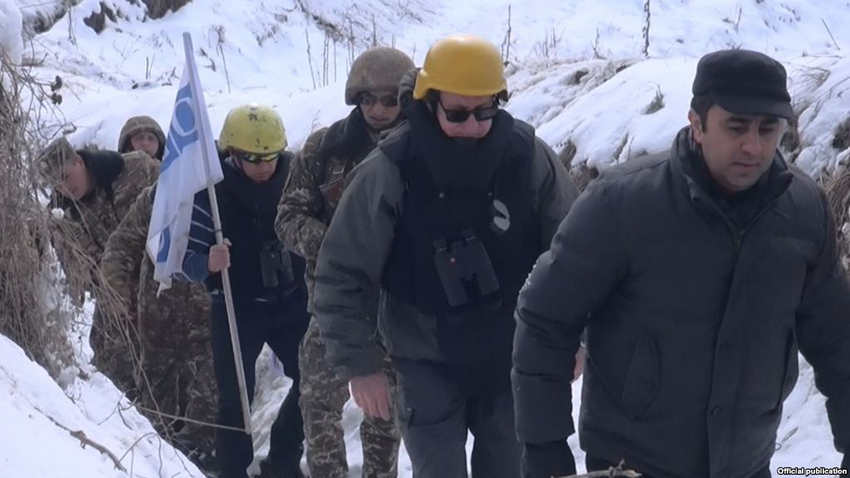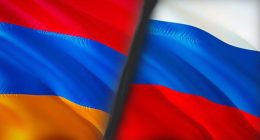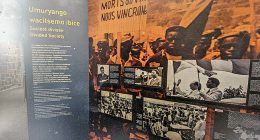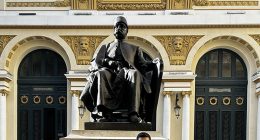BY SONA ZEITLIAN
Following the successful launching of the Annual Feminist Armenian Studies Workshop in 2017, a second two-day Workshop/Conference, titled Gendering Resistance and Revolution, took place at the University of California Irvine (UCI) on May 4-5, 2019. It was organized by three prominent scholars, Melissa Bilal, Assistant Professor of Humanities and Social Sciences at the American University of Armenia (AUA), Lerna Ekmekcioglu, professor of History and Women and Gender Studies at MIT, the two initiators of the first Workshop, and joining them Houri Berberian, Professor of History, and Director of Meghrouni Family Presidential Chair in Armenian Studies at UCI. Houri was also hosting the second Workshop.
The two-day groundbreaking event was free and open to the public, featuring fifteen well-known participants, specializing in women’s activism, resistance and revolution in the multilocal Armenian experience from the 19th century through the Velvet Revolution and beyond. It was sponsored by the Meghrouni Family Presidential Chair in Armenian Studies and co-sponsored by the Department of History, the Armenian International Women’s Association (AIWA-Los Angeles), National Association for Armenian Studies and Research (NAASR) and Calouste Gulbenkian Foundation lecture series on contemporary Armenian topics.
After opening remarks by Houri Berberian, the first panel titled Redefining Resistance and Revolution from an Armenian Feminist Perspective started promptly at 10:00 a.m., chaired by Arnold Alahverdian of UCI, who also introduced the three panelists.
The first was Houri Berberian, author of two important books, “Armenians and the Iranian Constitutional Revolution 1905-1911” and the recently published, “Roving Revolutionaries: Armenians and Connected Revolutions in the Russian, Iranian and Ottoman Worlds,” spoke about “Hysterical…Vague Look, Pronounced and Hooked Nose, Thin Bloodless Lips: Revolution, Resistance and Recovering Rubina.”
Sophie Areshian-Ohanjanian, known by her revolutionary name Rubina was the only woman involved in the attempt to overthrow the oppressive Ottoman regime by assassinating the Sultan in 1905. Houri detailed the initial setbacks, giving way to bitter recriminations and serious leadership problems. Rubina became the thrust of criticism and was described by her male colleagues as a frail, unpredictable and untrustworthy person given to hysterical outbursts and a nervous breakdown. However, she stood her ground and her detractors, chief among them Mardiros Margarian, named Sapho, was finally removed from leadership positions.
The second speaker, Melissa Bilal’s recent publication is the popular “Lullabies and the Memory of Pain: Armenian Women’s Remembrance of Pain in Turkey.” She has co-edited with Lerna Ekmekcioglu “A Cry for Justice: Five Armenian Feminist Writers from the Ottoman Empire to the Turkish Republic (1862-1933)”. Her presentation was titled “What was Radical about Zabel Asadur.”
Using the pen name Sybil, Asadur had raised women’s issues in her novel “Heart of a Girl” and articles in the Istanbul press. She had also organized women to serve in the provinces to combat illiteracy. As a feminist, she had advocated for women’s individual rights, independent thinking, the right to work and representation in the National Assembly. Through her poetry and prose writings and the preparation of Armenian language textbooks, she had also emphasized the role of culture in preserving the national identity.
The third panelist was Lerna Ekmekcioglu. Beside the above- mentioned book she co-edited with Melissa Bilal, her in depth analysis of “Recovering Armenia: the Limits of Belonging to Post Genocide Turkey” was widely acclaimed. Her presentation was titled “Post Genocide Mobilization of Armenian Women for their Rights.”
She began by stating that after the Genocide, Istanbul was the center of Armenian feminism with a group of prominent writers and activists such as Zabel Yessayan, Zaruhi Kalemkiarian, Anayis, Arshaguhi Teotig, Zaruhi Bahri and Hayganush Mark. In 1919 Armenian Women’s League was established “to awaken in women awareness of their interests and rights, so that they could attain a position of social, economic and political equality with men.”
The rise of Kemalism marked an exodus of notables and women intellectuals. But Mark stayed to continue the publication of her Hay Geen Magazine and the advocacy for gender equality, promotion of social justice and participation in the civic development of the nation.
The second panel titled Resisting Invisibility was chaired by Pauline Pechakjian of UCI, who introduced the three speakers.
The first was Sona Zeitlian, author of a pioneering study about revolutionary women, titled “The Role of Armenian Women During the Revolutionary Movement,” then “On the Trail of Armenian Women from Ancient to Modern Times,” both winners of the Melidinetsi Award of the Catholicosate of Cilicia. Other published works include the illustrated “Folktales of Musa Dagh,” four illustrated volumes of heroes and heroines of Armenian legendary history and “Armenians in Egypt: Contribution to Medieval and Modern Egypt.” Her presentation was titled “From Oblivion to Visibility: In Search of Women’s Role During the Armenian Revolutionary Movement and Beyond.”
As she could find no “precedent, no documentary material and no model “ for her research, she retrieved the stories of revolutionary women by interviewing members of the revolutionary generation living in the diaspora. Among them was Simon Vratsian, Isguhi Tiriakian, Isguhi Tavitian and others. In her search for primary sources, she cited a handwritten letter by the son of Rubina, a participant in the planning of the failed attempt to assassinate the Sultan and handwritten recollections of Agulineh Khanjian, a participant in Hajin’s self defense. The continuing skepticism about her work gave her a sense of purpose to persevere.
Based on extensive research, she detailed the role of Eastern and Western women, as well as those in the provinces during the revolutionary movement, then the First Republic of Armenia and beyond.
The second panelist was Vartan Matiossian, a literary scholar, Executive Director of the Armenian National Education Committee. He is the author of scores of articles, reviews, essays and translations from Spanish. His publications include a biography of Armen Ohanian in collaboration with Artsvi Bakhcinyan of Yerevan. His presentation was about “Armen Ohanian: Art and Revolution from the Caucasus to Mexico.”
He began by describing her as a remarkably “multifaceted” figure in the first half of the 20th century. He detailed her accomplishments as an actress, a writer and political activist in a career spanning from the Caucasus to Europe and finally to Mexico. At one time, she was celebrated as a Persian dancer, later becoming an established writer in French. Although she lived in the margins of Armenian culture, she maintained a strong attachment to her roots to the end of her life.
The third panelist was Meline Mesropyan, an International Culture graduate of Tohoku University, Japan. She has done extensive research on the life and work of Diana Apcar, the First Republic of Armenia’s ambassador to Japan, the first female diplomat in the modern world. Her presentation was titled “Diana Apcar and her network: Efforts to Change the Armenian Situation in Turkey.”
Diana excelled in diplomatic networking and laid the groundwork for “raising international awareness of the Armenian Question” by writing in international media outlets and publishing books to appeal to the world’s conscience. Through her publications, she brought a sense of history to the diplomacy she conducted.
By making use of Japanese archival data, Mesropyan stressed Apcar’s role in promoting moral and financial support and facilitating the legal paperwork for refugees during World War I and even after the fall of the First Republic of Armenia. For her humanitarian activities and networking for world peace, she was called Mother of Yokohama. Until her death in 1937, she remained active in public life, making her legacy a testament to “the difference one determined woman can make in working for peace and justice.”
The third panel was titled “Resistant (Re) Presentations” and chaired by Sona Tajiryan of UCLA, who also introduced the three speakers.
The first was Elyse Semerdjian, Associate professor of Middle Eastern History at Whitman College and author of “Off the Straight Path: Illicit Sex, Law and Community in Ottoman Aleppo” and articles on gender, non-Muslims and law in the Ottoman Empire. Recently she was awarded a fellowship focused on the topic of “skin.” Her presentation was titled “White bodies, Savage marks: Medical and Racial Discourse of Armenian Women’s Tattoos.”
She described the tattoos as “symbols that indigenous groups (Arabs, Kurds, Gypsies) believed bolstered women’s fertility and beauty, offered medical healing and signaled tribal affiliation.” Armenian women, who were forcibly converted or ended up in Muslim households, were marked with tattoos on their faces, neck and hands. As a result, they felt stigmatized and “experienced the dual trauma of forced assimilation… and another trauma when they re-entered Armenian society looking visibly like outsiders.”
As a sign of shame, the removal of the tattoos, sometimes called “corrupted flesh” became a prime objective “by any means necessary: cutting, scraping and burning… It became part of humanitarian medical mission efforts at home and abroad.”
The second panelist, Nora Tataryan of University of Toronto has done research about the representation of the Armenian Genocide in contemporary art. She has presented her work internationally and published articles in both academic and non-academic journals. She paper about “Comfortable Ways of Encountering the Other on a Genocidal land” was relayed by skype.
Discussing the intricate relationship between art and responsibility, she explored “the problematic nature of the depiction of Armenian woman as a weak, racialized figure” in Erhan Arik’s video “Remembering.” She first referred to “the longstanding literary and historical tradition of representation of Armenian women in the aftermath of the Genocide.” Then, conscious of the “impossibility of forging a comfortable encounter with the other in relation to the unpresentability of the Genocide,” she considered Arik’s video “in the absence of the political will” to recognize the Genocide as “an (almost) obligatory move in order to be able to live on Genocidal land.” A complex and thoughtful proposition!
The third panelist, Talinn Grigor of the University of California, Davis is an art historian, whose publications include “Building Iran: Modernism, Architecture and National Heritage under the Pahlavi Monarchs” and “Contemporary Iranian Art : from the Street to the Studio,” also forthcoming is “The Persian Revival: Ancient Iran in Art, Historiography and Imperialism.” Her presentation was titled “Iran’s Armenian Women and the Revolutionary Intentions of Avant-garde Architecture.”
Through a mostly visual presentation, she examined photographs exploring how Armenian women architects of Iran “navigated the multiple spheres of avant-garde architecture in the 1960s and 1970s with their Armenian identity.”
The fourth panel was titled “When is Activism Revolutionary?” and chaired by Karen Jallatyan of UCI, who also introduced the speakers.
The first was Tamar Shirinian co-director of Women’s and Gender Studies at Millsaps College, who has written about the political economy, gender and sexuality in the post Socialist Republic of Armenia. Her current research is about feminist movements in Armenia as an integral, though often marginalized part of larger social movements since 2012.
She began by stating that Armenia’s Velvet Revolution “marked many ways of rethinking gender and revolution.” Although it was hard to bring about cultural change in the dominant patriarchy, she believed that “actions organized by grassroots feminists, like We Don’t Have a Daddy” would gradually give way to “new forms of thinking liberation: liberation not only for women, but for Armenians… from the knots of patriarchy.”
The second speaker was Rosie Vartyter Aroush of UCLA, whose PhD dissertation was about “A Life of Otherness: Identity Negotiations, Family Relations and Community Experiences among LGBTQ Armenians in Los Angeles.”
In a “constant state of resistance and reconciliation in their family relations, community experiences and actualization of their contested identities,” she described the LGBTQ community’s strategies in their struggle for equality and acceptance. The Gay and Lesbian Armenian Society (GALAS) was established in Los Angeles in 1998. Others chose to create “social movements by living by example, thereby creating a discussion on organized resistance versus individual activism.”
Summing up LGBTQ Armenian community’s activism, she concluded that it “employs visibility and queer existence as resistance and normalization as revolution.”
At the conclusion of the first Workshop/Conference day, the participants were treated to a sumptuous dinner. In spite of the long day, there were lively exchanges round the table, old acquaintances were renewed and new ones solidified.
The second day of the Workshop/Conference started with the fifth panel titled “From Velvet to? What was Revolutionary?” chaired by Houri Berberian, who also introduced the participants to speak briefly first, then take part in a roundtable discussion.
The first speaker was Irina Ghaplanyan, First Deputy Minister of Nature Protection of the Republic of Armenia. Beside her academic and media publications, her recently published book is titled “Post Soviet Armenia: the New National Elite and the New National Narrative.” Her presentation was about “Armenia’s Velvet Revolution: From Women’s Silent Presence to Public Speaking and Political Activism.”
She first described the 2018 Velvet Revolution as a “social, generational and gender based” reform movement, where women supported “environmental causes.” They acted as a “driving force, yet were non-confrontational.” Advocating “respect and tolerance,” they were ready “to redefine power,” to speak about gender equality, protection of women’s rights and increasing women’s public and political participation. Stressing the “cooperative nature of power,” she cautioned, ”Power cannot be exclusively male, we need collectively to push for more power.”
The second panelist was Anna Harutyunyan of Berlin Free University’s Department of Social and Cultural Anthropology. She has been professionally engaged in a number of Armenian and international civil society organizations, managing programs in the fields of public education, community development and gender equality. Her presentation titled “Women intellectuals and the Revolution: Where are They Now?” was relayed by skype.
It was important to question whether a woman intellectual was independent and capable of critical thinking or belonged to a group and followed group thinking. She valued the “societal engagement” of the first type as a means of shaping opinions, enabling women “to freely contribute to strengthening society and the state.”
The third panelist was Shakeh Kaftarian, consultant at the American University of Armenia, who has recently chaired an international conference about empowering girls and women in Armenia. Her presentation was titled “Resistance Comes in many Forms.”
Describing strategic approaches to activism, she cited direct action on administrative and academic levels to empower girls and women. As for helping rural women, the support of “women in responsible positions”, as well as the intervention of “well-connected personalities” were needed. She acknowledged it to be a “slow moving process” and that both “diplomacy and a change of strategies are needed to achieve success.”
The fourth speaker was Anna Ohanyan of Stonehill College, a Fulbright scholar whose research has been supported by Harvard University, the Woodrow Wilson International Center for Scholars, the German Marshall Fund and the U.S. State Department. Among her latest books is “Russia Abroad: Driving Regional Fracture in the Post-Communist Eurasia and Beyond.” She has also written extensively in academic journals and highly regarded newsmagazines. Her presentation was titled “Wearing the Velvet: Women, People Power and the Parliament.”
In view of Armenia’s authoritarian system, the speaker highlighted the women’s grassroots, non-violent participation in the Velvet Revolution. Whereas previous governments had focused on consolidating power, women had mobilized in the country’s civil society and their participation in the revolution had helped to keep the movement peaceful. As a result, people had come out in large numbers, “making the revolution broad-based and installing democracy.”
She expected a “strong civil society and gender equality to defeat authoritarianism.” Finally, she hoped that “women’s involvement in civilian efforts can resolve conflicts and bring about peace.”
The sixth panel was a public discussion organized by the Feminist Armenian Research Collective (Fem ARC) led by Melissa Bilal and Lerna Ekmekcioglu. They exchanged ideas with the participants and answered questions from the audience. There was a discussion about the post revolutionary phase in Armenia and the need to establish Women’s Studies Centers in both the American and the Yerevan State Universities. As words such as feminism and gender were taboo in Armenia, critical thinking was needed to redefine women’s role as agents of change for peace and security. Finally, there was consensus to organize the next annual interdisciplinary workshop/conference in Armenia.
All who attended the second annual Workshop/Conference were unanimous in qualifying it as “productive, enlightening and inspiring.” They all commended Melissa Bilal, Lerna Ekmekcioglu and Houri Berberian for an exceptionally well organized event and were all eager to “maintain and continue their collaboration.

